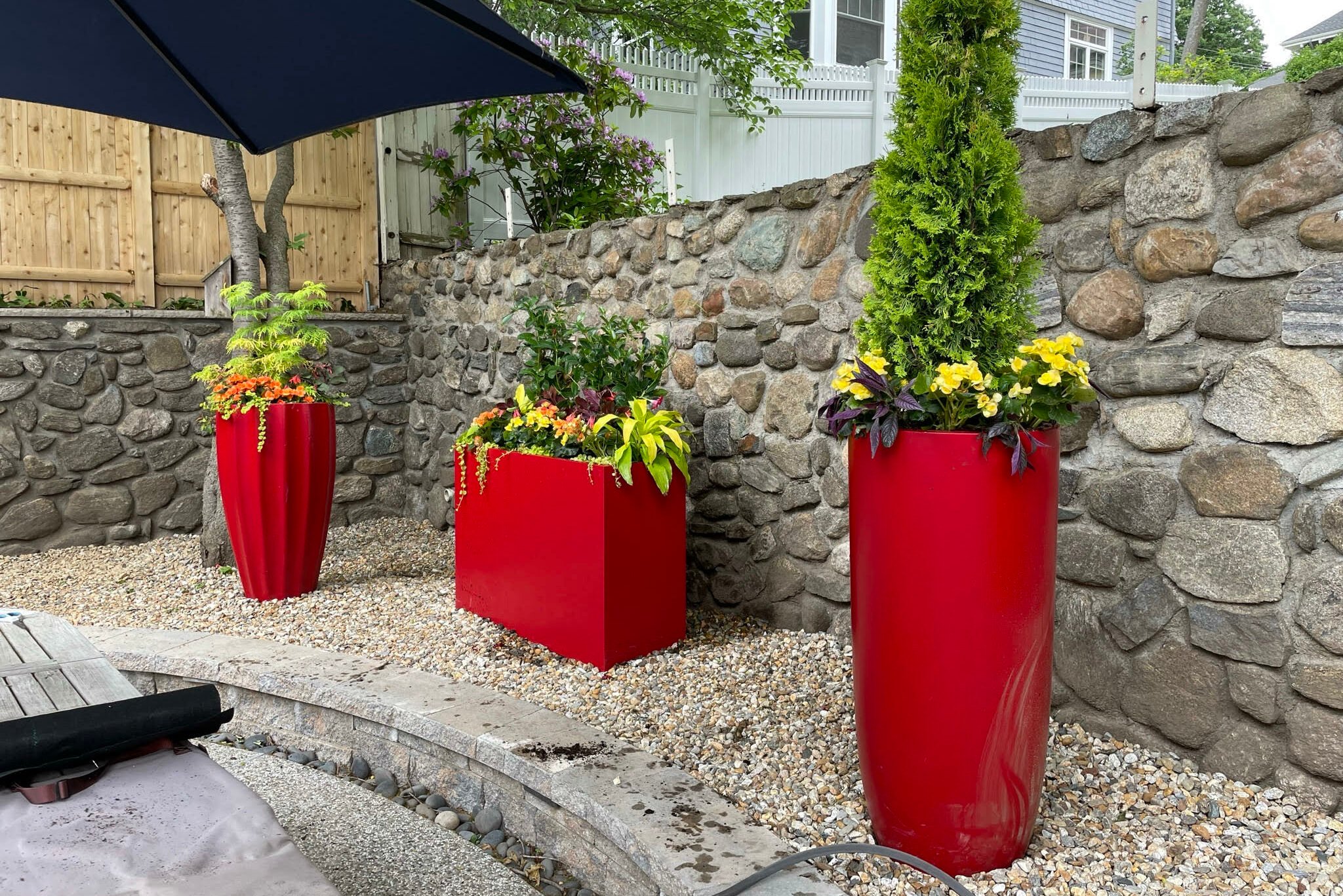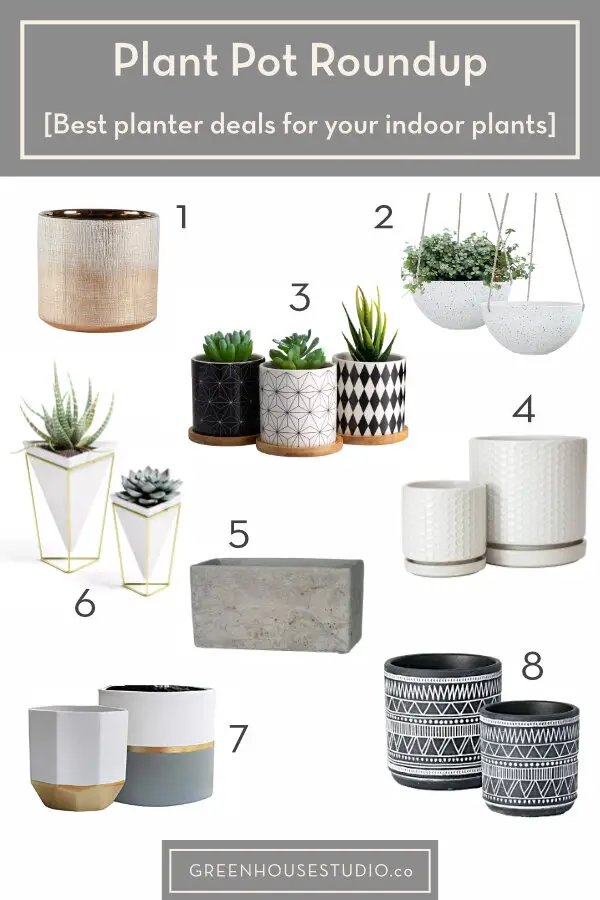Finding the best plant pot can be tricky. The choice impacts plant health and growth.
There are many types of plant pots available. Each type has its own pros and cons. The right pot ensures your plants thrive. Factors like material, size, and drainage matter. For example, clay pots are great for water-loving plants. Plastic pots are lightweight and versatile.
Ceramic pots look beautiful but can be heavy. Each option suits different needs. Knowing the best pot for your plant can make all the difference. This guide will help you choose the right plant pot. Let’s explore the features of each type and find the best fit for your green friend.
Introduction To Plant Pots
Picking the right plant pot is very important. A good pot helps plants grow well. It supports the plant roots. It also holds water for the plants. A wrong pot can harm the plant. Plants may not grow as they should. Some pots are better for some plants.
Consider the size of the pot. The pot should fit the plant’s roots. Think about the material of the pot. Clay pots are heavy and hold water well. Plastic pots are light and cheap. Drainage holes are important. They help water flow out. Too much water can hurt plants. Also, think about the style of the pot. It should look nice in your space.
Terracotta Pots
Terracotta pots are breathable. This helps the soil stay dry. They are also heavy. So, they don’t tip over easily. These pots are affordable. They are easy to find in most garden stores. Terracotta pots are also durable. They can last for many years if taken care of.
- Cacti
- Succulents
- Herbs like thyme
- Small shrubs
- Aloe Vera
Plastic Pots
Plastic pots are lightweight, affordable, and retain moisture well, making them ideal for indoor and outdoor plants. Their durability and variety of sizes suit different plant needs.
Advantages Of Plastic
Plastic pots are lightweight and easy to move. They are durable and do not break easily. These pots are affordable and come in many sizes. Plastic pots keep moisture in the soil longer. This helps plants stay hydrated.
Best Uses For Plastic Pots
Plastic pots are good for indoor plants. They are also great for small outdoor plants. Use them for herbs, flowers, and small trees. These pots are perfect for balconies and patios. They are easy to clean and reuse.
Ceramic Pots
Ceramic pots are beautiful and come in many colors. They keep plants warm in winter. These pots are heavy and do not tip over easily. Ceramic pots hold water well, so plants do not dry out fast. They are durable and can last a long time. These pots can also decorate your home nicely.
Ceramic pots are great for indoor plants. Ferns and pothos grow well in them. Cacti and succulents also do well. Herbs like basil and mint fit perfectly. Orchids look stunning in ceramic pots. African violets thrive in them too. These pots can house many types of plants.
Metal Pots
Metal pots are very durable. They can last for many years. These pots are strong and can hold big plants. Metal pots also look very modern and sleek. They can add a stylish touch to any space. They are resistant to weather changes. This makes them great for outdoor use. Metal pots do not break easily. They are also easy to clean. Simply wipe them with a cloth. Metal pots can be a good choice for many.
Use metal pots for large plants. They are good for indoor and outdoor settings. Metal pots work well in modern homes. They can be used in gardens too. Heavy plants fit well in metal pots. Use them when you want a long-lasting option. These pots are perfect for harsh weather. Use them if you want a clean look. They are great for showcasing your plants.
Wooden Pots
Wooden pots look natural. They blend well with gardens. They keep soil cool and moist. Wooden pots are durable. They can last for years. These pots are also eco-friendly. They are made from renewable resources. Wooden pots are unique. Each one has its own pattern. They can be painted or stained. This allows for customization. Wooden pots are also sturdy. They can support heavy plants.
| Plant Type | Reason |
|---|---|
| Herbs | Need moderate moisture |
| Ferns | Thrive in shaded areas |
| Succulents | Require good drainage |
| Small Trees | Benefit from sturdy support |
| Flowers | Enjoy cool soil |
Fabric Pots
Fabric pots are great for plants. They help roots grow better. Roots can breathe in fabric pots. This means plants get more air. More air helps plants grow strong. Fabric pots also drain water well. This stops roots from rotting. Fabric pots are light and easy to move. They are also eco-friendly. This is good for the planet.
Many plants love fabric pots. Herbs like basil and parsley do well. Vegetables such as tomatoes and peppers grow great. Flowers like marigolds and petunias thrive. Fabric pots are also good for small trees. Even succulents and cacti can grow in fabric pots. Fabric pots are versatile and can suit many plants.
:strip_icc()/Plants-Stress-Millennials-81a1ef74d68c4704842483a3be37de60.jpg)
Credit: www.bhg.com
Self-watering Pots
Self-watering pots have a water reservoir at the bottom. Roots draw water up as needed. This helps prevent overwatering. It also keeps plants hydrated longer. These pots are great for busy people. They reduce the need for frequent watering. Moisture levels stay more constant. This can lead to healthier plants. These pots often come with an indicator. It shows when to add more water. This makes plant care easier.
Not all plants thrive in these pots. Best plants include herbs like basil and mint. Houseplants such as spider plants do well. Vegetables like tomatoes and peppers are also good. Avoid plants that need dry soil. Cacti and succulents are not ideal. Choose plants that prefer moist soil. This way, they will grow well and stay healthy.
Choosing The Right Pot For Your Plants
Different plants need different pots. Succulents like dry soil, so use pots with good drainage. Ferns love moisture. Pick pots that keep soil wet. Small plants grow well in small pots. Big plants need large pots to spread roots. Clay pots are great for airflow. Plastic pots hold water better.
Indoor plants need different pots than outdoor plants. Outdoor pots should handle weather changes. Indoor pots can be lighter. Bright rooms need pots that keep plants cool. Dark rooms need pots that hold heat. Think about your plant’s environment before picking a pot.
:max_bytes(150000):strip_icc()/SPR-the-best-tall-plants-for-containers-4142017-7d2546e332fb46d6aacfc3d7d6343031.png)
Credit: www.thespruce.com

Credit: jayscotts.com
Frequently Asked Questions
What Is The Best Material For Plant Pots?
The best material for plant pots depends on the plant and environment. Common materials include plastic, ceramic, terracotta, and metal. Plastic pots are lightweight and durable. Ceramic pots are decorative and provide good insulation. Terracotta pots are breathable, ideal for succulents.
Metal pots are stylish but can overheat.
Do Plants Grow Better In Plastic Or Ceramic Pots?
Plants can grow well in both plastic and ceramic pots. Plastic pots are lightweight, durable, and retain moisture well. Ceramic pots are aesthetically pleasing and provide good insulation. The choice depends on the plant’s needs and the environment.
Are Terracotta Pots Good For Indoor Plants?
Yes, terracotta pots are good for indoor plants. They are breathable, allowing air and moisture to circulate. This helps prevent root rot. However, they can dry out quickly, so regular watering is necessary. They are ideal for succulents and cacti.
How To Choose The Right Size Plant Pot?
Choose a pot size that is 1-2 inches larger than the plant’s current pot. This allows room for growth. Too large a pot can lead to overwatering. Ensure the pot has drainage holes to prevent waterlogging and root rot.
Conclusion
Choosing the right plant pot matters for your plant’s health. Different materials offer unique benefits. Plastic pots are lightweight and affordable. Terracotta pots provide better breathability. Ceramic pots add style and stability. Always consider the plant’s needs and your space.
Drainage is crucial for healthy roots. Think about aesthetics too. The right pot enhances your home’s decor. Make a thoughtful choice and enjoy a thriving plant.

My mission is to help you bring the beauty of nature indoors with expert advice, detailed plant care guides, and creative design ideas.





Leave a Reply